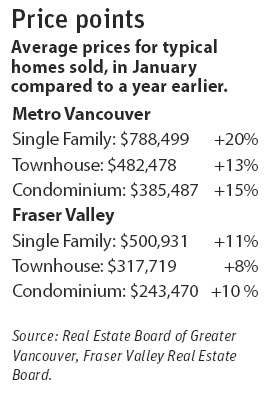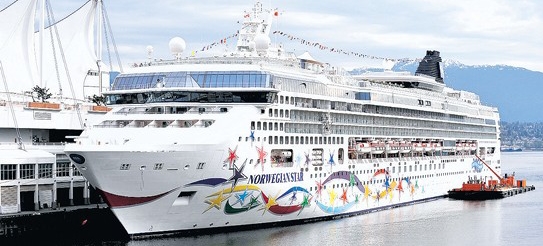Other
Archive for February, 2010
Vancouver Sun launches interactive Olympics map for locations, events
Tuesday, February 2nd, 2010Jeff Lee
Sun
Looking for the address of one of those three German Olympic pavilions, the beer-fest one in the parking lot or the one in Stanley Park? Want to know where Park & Rides are in Richmond? Trying to find the International Olympic Committee’s invitation-only marketing club?
The Vancouver Sun has created an interactive Google map containing just about every Olympic location and event you could want.
Official 2010 competition and non-competition venues, sponsor houses, Canadian federal, provincial and city pavilions, celebration sites, Park & Ride lots, Olympic Bus Network locations, free bicycle valet services, media facilities, road closures, Olympic pedestrian malls, cruise ship services, and the obligatory SkyTrain, Canada Line and WestCoast Express stations.
We even listed the location of the three RCMP cruise ships, safely ensconced as they are behind security fencing. We’ve also linked useful websites to many of the map pointers, such as event schedules for each of the Olympic venues and programming information for celebration sites.
The map is so complex that Google apparently can’t handle all of the information on one page; many of the transportation services have spilled over to a second page.
And we’re still looking for more. If you have tips on events or facilities we’ve missed, e-mail [email protected].
You can access the map at www.vancouversun.com/olympicmap.
© Copyright (c) The Vancouver Sun
Dunsmuir Viaduct could be next to have its own separated bike lane
Monday, February 1st, 2010Andrea Woo
Sun
Vancouver city council will vote Thursday on whether to construct a separated bike lane on Dunsmuir Viaduct.
The project would cost $300,000, with funds coming from the 2009 streets basic capital budget, according to a report by the city’s engineering services department.
It would be installed on the north side of the viaduct and be created by reconfiguring existing barriers.
No traffic lanes would be removed.
“We know from the Burrard Bridge that when we separate bike lanes from cars with protective barriers, more people cycle and it reduces the risk of injury or accidents,” said Mayor Gregor Robertson, an avid cyclist, in a statement released Sunday.
“We need more protected bike lanes in Vancouver and the Dunsmuir Viaduct is the next logical step.”
City staff have recommended installation before the Olympics’ closing ceremony, as the viaduct will be closed until March 2, due to security requirements.
A six-month trial would allow for monitoring through three seasons, a range of weather conditions and special events, stated the report.
Coun. Geoff Meggs, who is on the city’s bicycle advisory committee, said the proposal would provide a stronger link to the downtown core — an area city council hopes to eventually upgrade as well.
“Right now it’s pretty challenging for anybody except the very confident cyclist,” said Meggs. “We’re going to ask staff as well to take a really hard look at how we can improve the downtown core with some separated lanes.”
The Burrard Bridge bike lane trial began July 13. It was originally scheduled for six months, but city council voted to extend it until after the Olympics.
A survey conducted in September found that 45 per cent of 310 respondents supported the continuation of the trial, compared to 21 per cent who were opposed and 28 per cent who were neutral.
© Copyright (c) The Vancouver Sun
Dunsmuir Viaduct next in line for bike lane
Monday, February 1st, 2010Frank Luba
Province

Based on the success of the Burrard Bridge bike lane, Vancouver Mayor Gregor Robertson is supporting a bike lane on the north side of the Dunsmuir Street Viaduct. The mayor’s office says this would not reduce traffic lanes as there is already a concrete partition on the south side of the viaduct. Photograph by: Les Bazso, PNG, The Province
Call it Burrard Bridge Bike Lanes Brouhaha, Part 2.
On Thursday, Vancouver City Council will consider whether a bike lane should be installed on the north side of the Dunsmuir Viaduct.
The controversial Burrard bike lane reduced the lanes available to motorists on the bridge. A release Sunday from the office of Vancouver Mayor Gregor Robertson suggests Dunsmuir will be different.
“The bike lane would be created by recon-figuring the existing barriers, and would not remove traffic lanes,” said the release, which included Robertson’s enthusiastic support. The new bike lane would open after the Olympic Games conclude.
“We know from the Burrard Bridge that, when we separate bike lanes from cars with protective barriers, more people cycle and it reduces the risk of injury or accidents,” said Robertson. “We need more protected bike lanes in Vancouver and the Dunsmuir Viaduct is the logical next step.”
Coun. Suzanne Anton doesn’t oppose the Dunsmuir project, but she pointed out it’s not accurate to say traffic lanes wouldn’t be removed.
The lane proposed for bikes was blocked several years ago for construction in the area and never returned to motorists, explained Anton.
“The challenge in the downtown is there aren’t a lot of separated [bike] routes,” said Anton.
A staff report on the Dunsmuir lanes also suggested they should be connected with their equivalents on Burrard by a downtown network of protected lanes.
The budget for the Dunsmuir project is not to exceed $300,000, according to the report.
© Copyright (c) The Province



